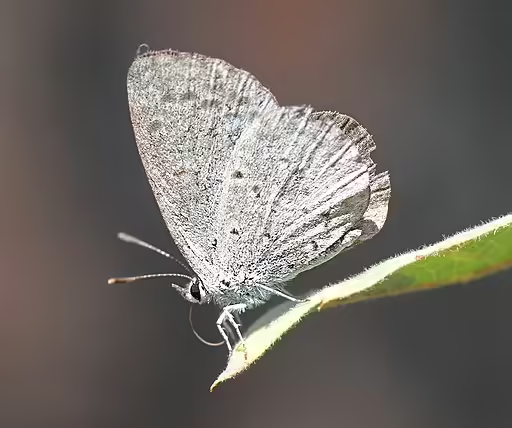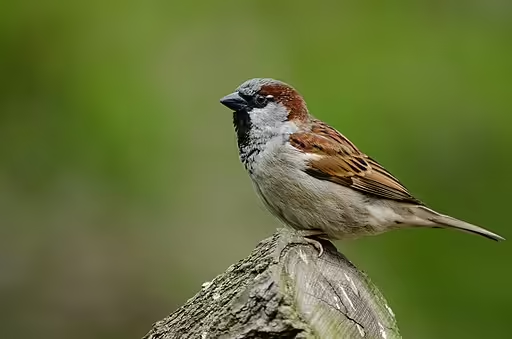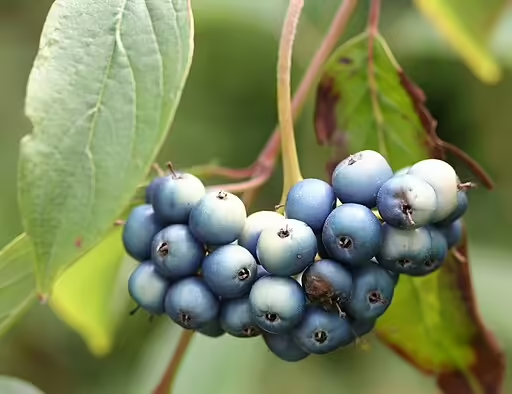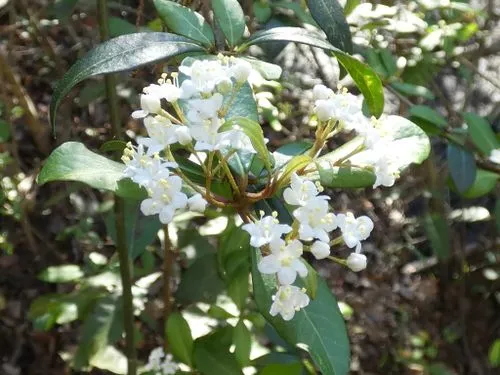Table of Contents for Silky Dogwood (Cornus amomum)
Silky Dogwood (Cornus amomum) is a deciduous shrub that is native to the eastern United States, west to the Mississippi River. This plant is a host to the Spring Azure butterfly (Celastrina ladon) and the Cecropia Moth (Hyalophora cecropia). Growing from 6 to 12 feet tall, this species has yellow to white flowers that bloom from May to June. It is hardy in zones 5-8.
Taxonomy and Naming of the Silky Dogwood (Cornus amomum)

Taxonomy
Silky Dogwood (Cornus amomum) was originally named and described by the son of Carl von Linnaeus, who goes by Carl Linnaeus the younger, in 1782. This species has kept the same name since and is a member of the Dogwood Family (Cornaceae).
Meaning of the Scientific and Common Names
Scientific Name
The genus name, Cornus, is from the Latin word “cornu,” which means horn (Missouri Botanical Garden) and refers to the toughness of the wood. The species name, amomum, is of unknown origin, but the name generally refers to pungent or aromatic properties.
Common Name and Alternative Names
The common name comes from the pubescence of the leaves. Other common names include pale dogwood, red willow, silky cornel, blue-berried dogwood (Eaton 1919), and swamp dogwood.
Physical Description

Description
- Plant Type: This plant is a deciduous shrub.
- Height: 6 to 12 feet tall
- Stem: The stem is pubescent and can be a brown, light gray to a red/purple color.
- Leaves: The leaves are opposite, simple, entire, and elliptic, to ovate in shape. The leaves are 1 to 5 inches long and about 1 to 3 inches wide. The leaves are usually silky-pubescent on the underside (Bailey and Bailey 1976).
- Flower color: yellow to white
- Blooming period: This plant blooms from May to June.
- Fruiting type and period: This plant fruits with blue or white berries in the summer.
Range of Silky Dogwood (Cornus amomum) in the United States and Canada

This species is native to the United States from east of the Mississippi River.
Habitat

This dogwood generally grows in shrub swamps in wetlands and the edges of waterbodies, either as monotype or with other shrubs.
Hosted Insects

This species is a host for the Spring Azure Butterfly (Celastrina ladon), the Io Moth (Automeris io), and the Cecropia Moth (Hyalophora cecropia).
Other Supported Wildlife

This species is a nectar source to other butterflies, skippers, and bees. It is also a food source for birds in the late summer and fall. This species was found to be an important nesting location for Traill’s Flycatcher (Empidonax traillii) (a bird) in Michigan (Walkinshaw 1966).
Frequently Asked Questions
Is this plant deer resistant?
This plant has not been shown to be deer resistant and deer often eat the fruit.
Does this plant have any ethnobotanical uses?
The Native American Ethobotanical Database shows that this shrub has been used for pharmaceuticals and for smoking.
How is this plant distinguished from other dogwoods?
This dogwood has a distinctive blue fruit (Ferguson 1966). It is also similar to pale dogwood (Cornus obliqua), but pale dogwood has cuneate leaves and silky dogwood has rounded to truncate leaves (Weakley 2022).
Is this plant invasive?
This plant has not been shown to be invasive in the literature, though it can cover a lot of area in shrub swamps.
What are some interesting facts about this plant?
This shrub species is prized for its red color of the young shoots in the winter (Favretti 1971).
Gardening with Silky Dogwood (Cornus amomum)
Add Silky Dogwood to Your Garden
The link below takes you to our product page where we get a small commission from your purchase at no additional cost to you.

Hardiness
This species is hardy in zones 5-8. If your garden is within these zones and you have the right growing conditions (soil, moisture and exposure), you may well be able to grow this plant. However, if planted outside of its range, the hosted species may not recognize the plant or be harmed by ingesting a different species with an unfamiliar chemical composition.
Optimal Conditions
This species grows best in places that have full sun or part-shade in soils that are wet to medium and well-drained. It can tolerate nearly full shade (gardenia.net).
Cultivars of this Species
This species has a few cultivars that have been developed and is often used as hedge or screening shrub.
- ‘Indigo’: cultivar with small white flowers and blue fruits (NC Extension Gardener).
- other listed cultivars include: ‘Grandiflorum’ and ‘Xanthocarpum’ (Bailey and Bailey 1976).
References
- Bailey, Liberty Hyde and Ethel Zoe Bailey. 1976. Hortus Third. (New York: MacMillan Publishing Company).
- Eaton, Mary E. 1919. American Berries of Hill, Dale, and Wayside. The National Geographic Magazine 35: 172.
- Favretti, Rudy J. and Gordon P. Dewolf. 1971. Colonial Garden Plants. Arnoldia 31 (4): 172-249.
- Ferguson, I.K. 1966. The Cornaceae in the southeastern United States. Journal of the Arnold Arboretum 47 (2): 106-116.
- Walkinshaw, Lawrence H. 1966. Summer Biology of Traill’s Flycatcher. The Wilson Bulletin 78 (1): 31-46.
- Weakley, A.S., and Southeastern Flora Team 2022. Flora of the southeastern United States. University of North Carolina Herbarium, North Carolina Botanical Garden.
